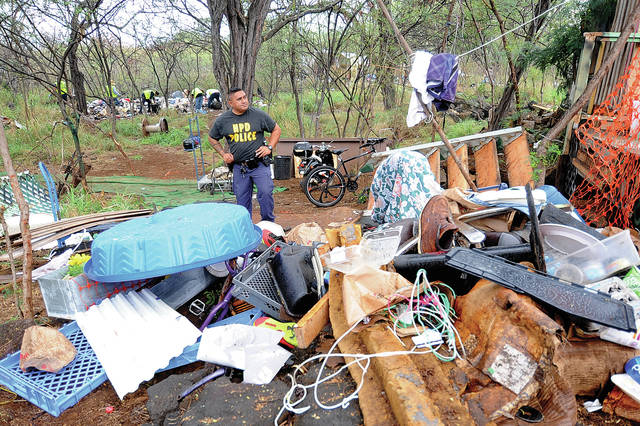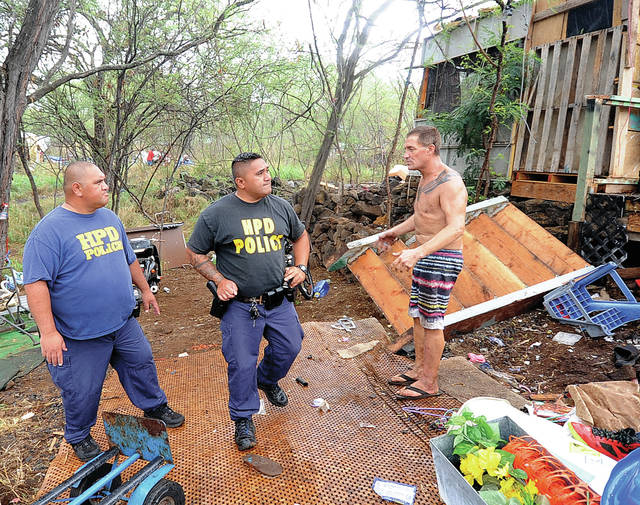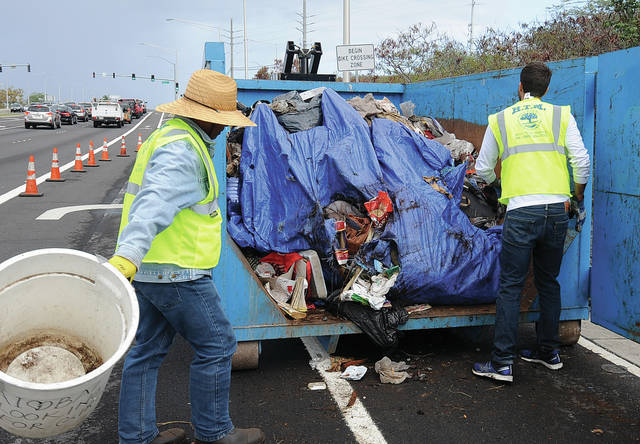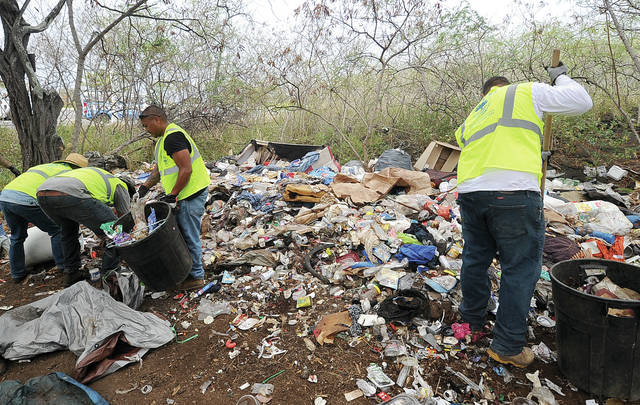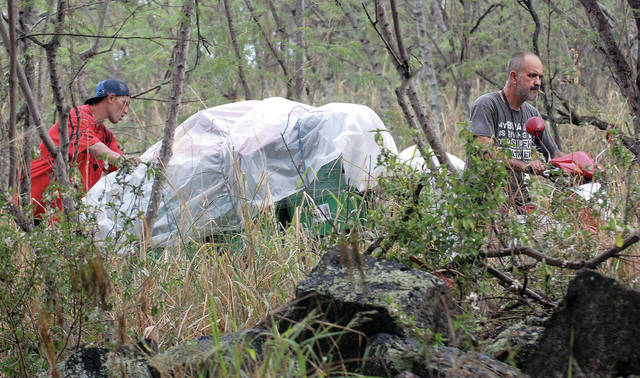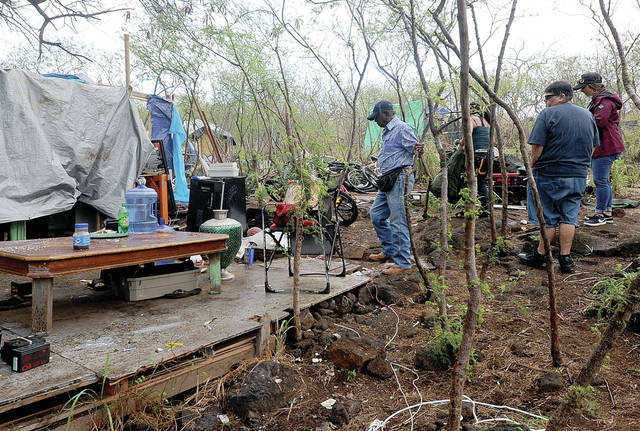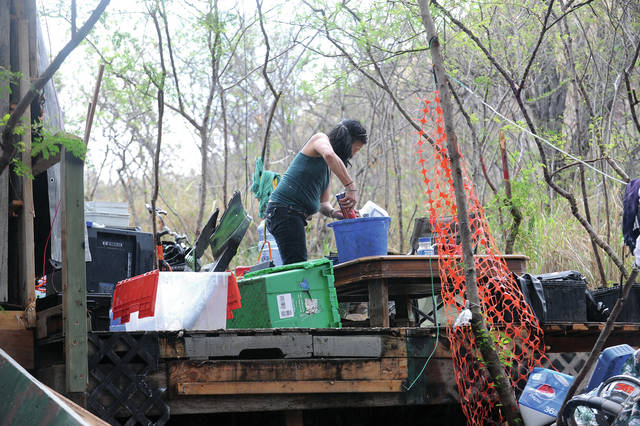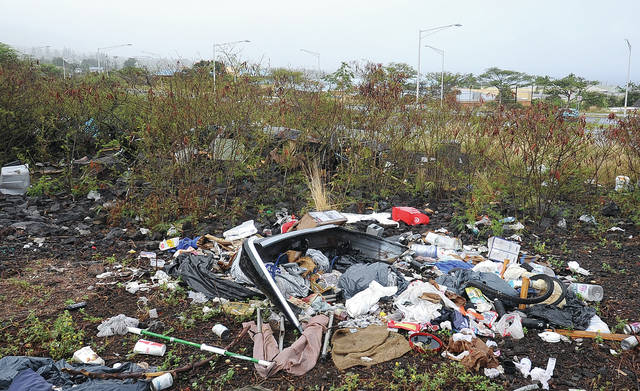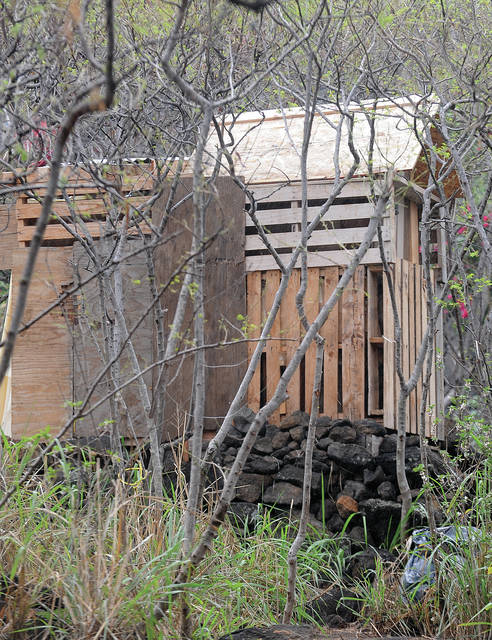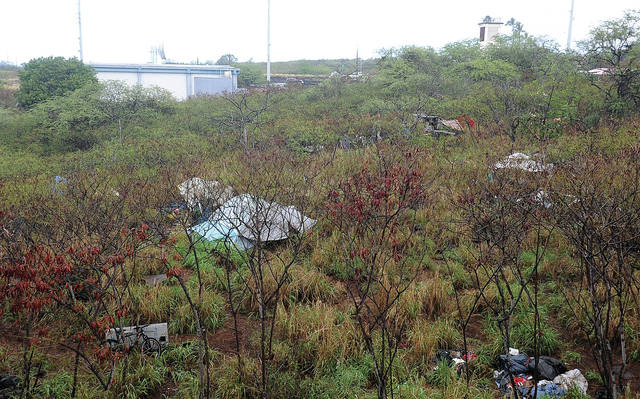DOT empties homeless encampment near busy Kona intersection
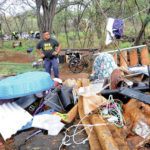
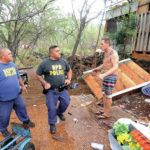
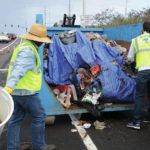
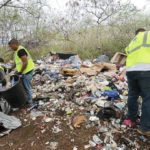

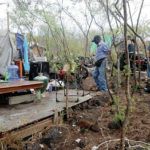
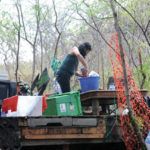
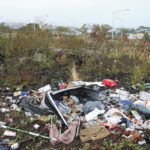

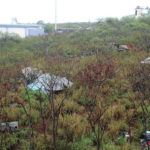
KAILUA-KONA — You can’t go home, but you can’t stay here.
That was the message the Hawaii Department of Transportation sent to several homeless individuals residing in the brush on the mauka side of the intersection at Palani Road and Queen Kaahumanu Highway when the state officially removed them from the parcel Monday.
The homeless encampment spanned state and county lands, as well as land belonging to Hawaiian Telcom, Inc. and the Queen Liliuokalani Trust. The Trust cleared its own lands of homeless presence prior to Monday’s work, while DOT was tasked with emptying and cleaning the rest.
“It’s a statewide initiative for us to ensure that we keep our highway areas safe,” said DOT Highways Division Deputy Director Ed Sniffen.
“We’ve been seeing a lot more incidents of homeless interactions or conflicts with vehicles, especially in areas you don’t expect them,” he continued, adding he was aware of two fatalities on Oahu last year resulting from encampments situated too close to highways.
The cleanup action was a state-led collaboration with Hawaii County in response to multiple complaints, Sniffen said, and serves as a follow-up effort to DOT’s clearing of the homeless from storm water drains under the highway near Henry Street last April — an area known locally as the Tunnels.
DOT workers and contracted crews on the ground said they were also scheduled to make trash pickup and evacuation visits to culverts where the highway intersects with Hina Lani Street and Makala Boulevard, as well as the Alii Drive area near Huggo’s. DOT is not planning to leave any supervisory personnel behind.
Departmental action to clear state lands on Oahu happen weekly, while state workers have been enlisted on a more limited basis across Maui and Hawaii Island. There are no plans to clean up any homeless encampments in Hilo at this time.
Cleanup crews targeted two main sites in Kona on Monday — the Palani Road and Queen Kaahumanu Highway intersection where nine homeless individuals were informed a week prior they had seven days to collect their possessions and go, and the Tunnels where two individuals were given the same warning on the same day.
The numbers of homeless DOT provided were similar to guesses offered by Huxley Reeves, a homeless man living in Kona who didn’t frequent either camp but is familiar with most of those individuals who did.
He said there were between eight and 10 homeless who lived in the brush at the Palani Road intersection with a few others coming and going. The Tunnels, Reeves said, have been home to approximately six to eight people who moved in after a camp located near Mental Health Kokua on Kalani Street in Kailua Village was shut down.
Reeves said the group at the Palani Road intersection began building their living area up as early as three years ago, which might account for the sheer amount of trash that had accumulated there.
A few homeless individuals at the cleanup site declined to comment.
A crew of 15 workers draped in neon vests and protective gloves shoveled piles of damp refuse into buckets and tarps under a wet sky Monday morning. They then hauled their loads on dirt paths twisting like a mini-labyrinth through the thick brush out to a blue dumpster stationed on the side of the road.
Sniffen said the brush would be cut back immediately after the crews finished the bulk of their work to aid further in a fuller and more thorough cleanup effort.
Crews disposed of shopping carts, wooden pallets, old furniture, a defunct motor bike and helmets, paper and plastic products, discarded clothing, old carpet and considerably more as a transient audience of motorists passed by, sometimes honking or offering verbal shows of support for those tearing down the camp.
“I have always been upset about that mess on the highway with the homeless situation,” said Don Maxwell, a long-time Kona resident. “I think if I got off a plane as a tourist and drove into Kona, I might just turn around, jump on the plane and go to Hilo or Tahiti or someplace else. It’s been a god-awful mess.”
In all, Sniffen estimated DOT pulled 10 truckloads of trash from the Palani Road intersection and expected the Tunnels would produce another four truckloads of rubbish.
His estimate for Palani Road came after most of the seven erected structures had already been torn down by homeless who evacuated the site prior to the cleanup. Still standing Monday were a makeshift house of considerable size and an outhouse, both built of wood.
“They were upset (they had to leave) because they pretty much had everything except electricity and running water,” Reeves said of those the state dispatched from the encampment. “It was very well thought out. It’s just everything on the inside was immaculate and everything on the outside looked like a garbage dump. And that’s where the problem lies.”
DOT projected cost of the cleanup initiative at around $60,000. The funds come from a legislative appropriation of $5 million for homeless enforcement controlled by the Department of Human Services, Sniffen said.
A few police officers maintained order during the cleanup process but no tickets were issued nor fines levied against the handful of homeless still present when it began. Those homeless were met, however, by outreach workers from HOPE Services Hawaii.
Brandee Menino, CEO of HOPE Services, said her organization made contact with seven individuals. Of the seven, none accepted offers to enter emergency housing at the shelter off of Pawai Place in the Old Kona Industrial Area. But five homeless did express interest in outreach Menino described as the start of a path to permanent housing.
That process begins with an intake to determine needs related to employment, personal identification and insurance, among others. HOPE then searches resources for which homeless individuals may qualify like social security or veteran benefits. Outreach workers then look for rental assistance subsidies that can help the homeless get a foot in the literal door of a permanent living space.
As for where everyone displaced will go in the meantime — or in the long-term if they don’t pursue, qualify for or keep permanent housing — Reeves said the options are limited. Some may end up near Old Kona Airport Park, he speculated, although living there is a more precarious proposition now because of consistent county sweeps.
No permanent sites pop up at the park any longer because people must be mobile to make camp there for a even night, Reeves said, carrying with them only a tent and sleeping bag so they can depart early and avoid running into problems. Eventually, many may end up back in the Tunnels, Reeves speculated.
“They’re doing everything in their power to push us completely out of Kona,” Reeves said of state and county officials. “It’s just this constant shifting of the homeless. They put us in places (that aren’t suitable), so we don’t go there.”
As for the county’s proposed Ohana Zone solution at Village 9 off Kealakehe Parkway, Reeves was skeptical that could ever work. He also questioned why the community would allow it.
“Would you really want a homeless center around a high school? You’ve got drug addicts, you’ve got sex offenders, you’ve got shiftless panhandlers,” Reeves said of a minority, but problematic, sector of the local homeless population. “I would be furious if I bought a house up there and had to worry about my 15-year-old daughter (dealing with panhandlers) every day.”
Solutions are at a premium, as rates of homelessness per capita in Hawaii still rank higher than in almost any other state across the country.
The most recent Point-In-Time Count study in January tallied 690 homeless people living on Hawaii Island alone, yet still indicated numbers were down for the third consecutive year. While state and county agencies acknowledge the statistics are flawed because it’s a self-reporting survey with several limitations, they also regard the count as a solid jumping off point.
Reeves disagreed, saying several homeless refuse to participate in the count and purposely avoid it. He estimated the amount of homeless just in Kona might be double what the PIT Count estimates for the whole of Hawaii Island.

